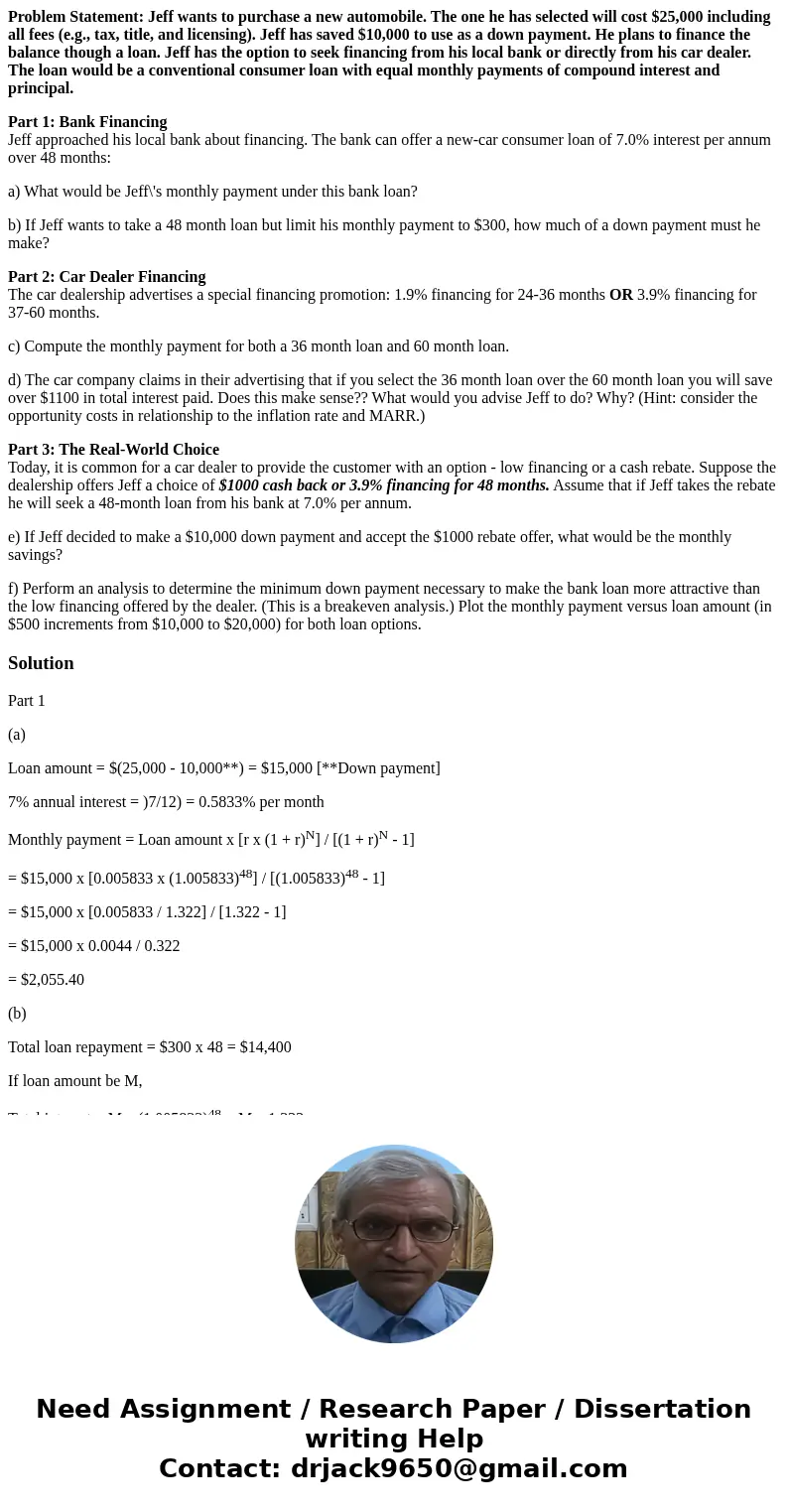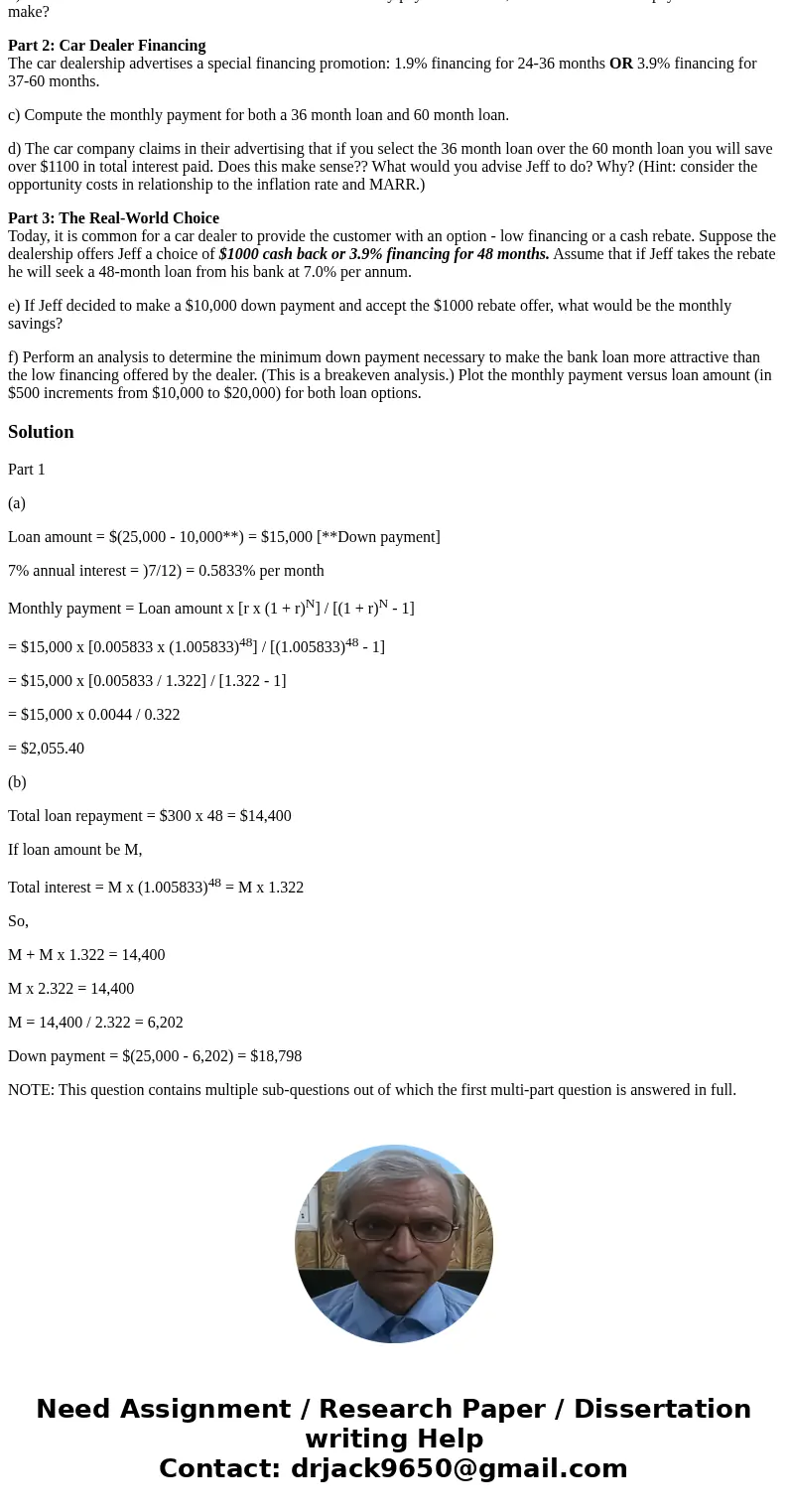Problem Statement Jeff wants to purchase a new automobile Th
Problem Statement: Jeff wants to purchase a new automobile. The one he has selected will cost $25,000 including all fees (e.g., tax, title, and licensing). Jeff has saved $10,000 to use as a down payment. He plans to finance the balance though a loan. Jeff has the option to seek financing from his local bank or directly from his car dealer. The loan would be a conventional consumer loan with equal monthly payments of compound interest and principal.
Part 1: Bank Financing
Jeff approached his local bank about financing. The bank can offer a new-car consumer loan of 7.0% interest per annum over 48 months:
a) What would be Jeff\'s monthly payment under this bank loan?
b) If Jeff wants to take a 48 month loan but limit his monthly payment to $300, how much of a down payment must he make?
Part 2: Car Dealer Financing
The car dealership advertises a special financing promotion: 1.9% financing for 24-36 months OR 3.9% financing for 37-60 months.
c) Compute the monthly payment for both a 36 month loan and 60 month loan.
d) The car company claims in their advertising that if you select the 36 month loan over the 60 month loan you will save over $1100 in total interest paid. Does this make sense?? What would you advise Jeff to do? Why? (Hint: consider the opportunity costs in relationship to the inflation rate and MARR.)
Part 3: The Real-World Choice
Today, it is common for a car dealer to provide the customer with an option - low financing or a cash rebate. Suppose the dealership offers Jeff a choice of $1000 cash back or 3.9% financing for 48 months. Assume that if Jeff takes the rebate he will seek a 48-month loan from his bank at 7.0% per annum.
e) If Jeff decided to make a $10,000 down payment and accept the $1000 rebate offer, what would be the monthly savings?
f) Perform an analysis to determine the minimum down payment necessary to make the bank loan more attractive than the low financing offered by the dealer. (This is a breakeven analysis.) Plot the monthly payment versus loan amount (in $500 increments from $10,000 to $20,000) for both loan options.
Solution
Part 1
(a)
Loan amount = $(25,000 - 10,000**) = $15,000 [**Down payment]
7% annual interest = )7/12) = 0.5833% per month
Monthly payment = Loan amount x [r x (1 + r)N] / [(1 + r)N - 1]
= $15,000 x [0.005833 x (1.005833)48] / [(1.005833)48 - 1]
= $15,000 x [0.005833 / 1.322] / [1.322 - 1]
= $15,000 x 0.0044 / 0.322
= $2,055.40
(b)
Total loan repayment = $300 x 48 = $14,400
If loan amount be M,
Total interest = M x (1.005833)48 = M x 1.322
So,
M + M x 1.322 = 14,400
M x 2.322 = 14,400
M = 14,400 / 2.322 = 6,202
Down payment = $(25,000 - 6,202) = $18,798
NOTE: This question contains multiple sub-questions out of which the first multi-part question is answered in full.


 Homework Sourse
Homework Sourse